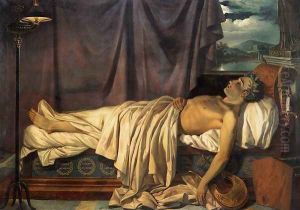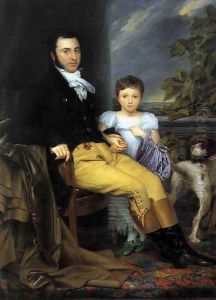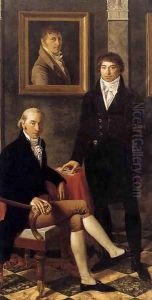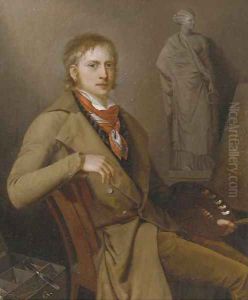Joseph-Denis Odevaere Paintings
Joseph-Denis Odevaere was a Belgian painter born on February 12, 1775, in Bruges. His early life and education in the arts were influenced by the cultural environment of Bruges, which was a significant center for painting during the 18th century. Odevaere showed artistic talent from a young age and received his initial training in his hometown. He later moved to Paris to further his studies under the tutelage of Jacques-Louis David, the leading French painter of the neoclassical style. David's influence is evident in Odevaere's work through his use of classical themes, precise drawing, and emphasis on idealized forms.
Odevaere's career flourished upon his return to Belgium, where he became an esteemed figure in the artistic circles. He worked on various commissions, including portraits, history paintings, and religious works. His neoclassical style was particularly well-received in an era that favored grand historical and mythological narratives. Odevaere's paintings are characterized by their clear composition, attention to detail, and a controlled palette that emphasized the drama and clarity of the subject.
In 1815, Odevaere achieved significant recognition for his monumental painting 'Lord Byron on his Deathbed,' which reflects his ability to capture the Romantic spirit that was emerging at the time. This painting marked a departure from his strict neoclassical roots and showcased a sensitivity to the changing artistic trends of the early 19th century. Despite his success, Odevaere remained deeply connected to his hometown of Bruges and contributed to the cultural life of the city.
Joseph-Denis Odevaere's contributions to art were not limited to his paintings. He was also involved in the administration of artistic institutions and played a role in the development of art education in Belgium. His efforts were instrumental in the establishment of the Academy of Fine Arts in Ghent. Odevaere continued to paint and be active in the art community until his death on January 25, 1830, in Brussels. Today, his works are preserved in various museums and collections, serving as a testament to the neoclassical movement in Belgium and Odevaere's skill as an artist.




